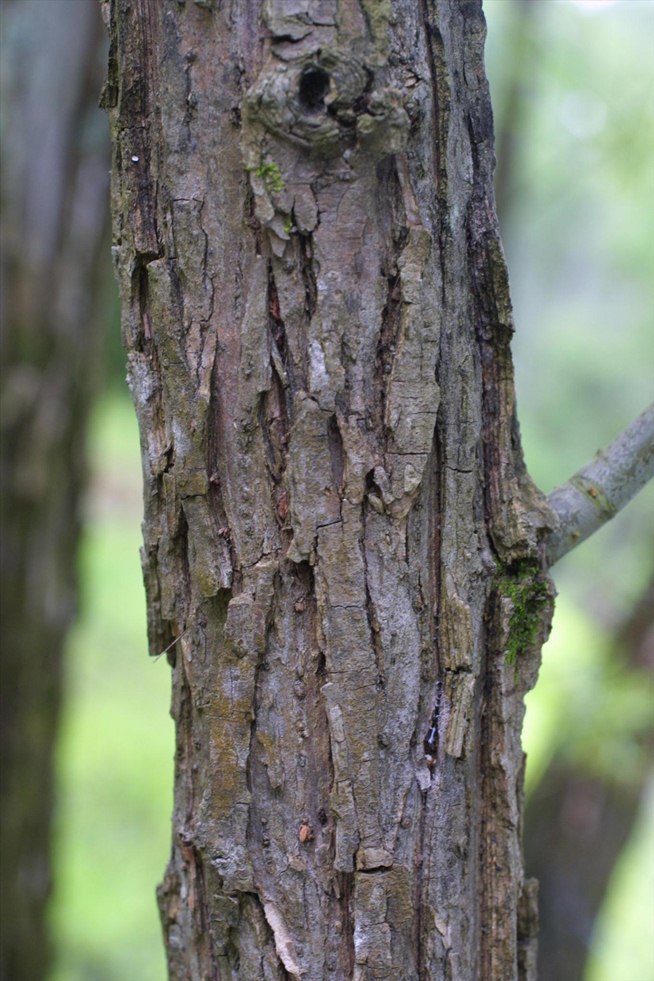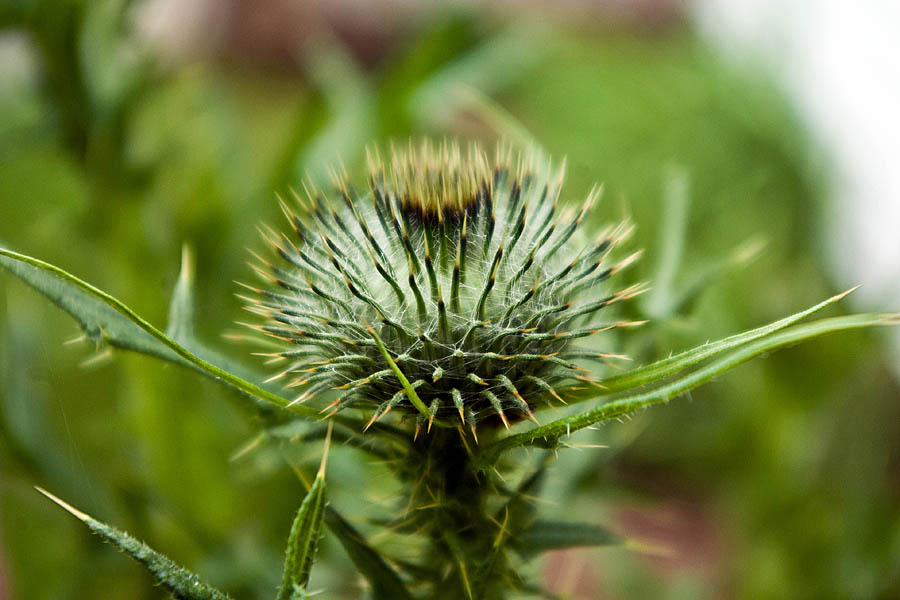Salicylic Acid - White Willow Bark Weight Loss
Salicylic acid (from Latin salix, willow tree, from the bark of which the substance used to be obtained) is a monohydroxybenzoic acid, a type of phenolic acid and a beta hydroxy acid. It has the formula C7H6O3. This colorless crystalline organic acid is widely used in organic synthesis and functions as a plant hormone. It is derived from the metabolism of salicin. In addition to being an important active metabolite of aspirin (acetylsalicylic acid), which acts in part as a prodrug to salicylic acid, it is probably best known for its use as a key ingredient in topical anti-acne products. The salts and esters of salicylic acid are known as salicylates.

Chemistry
Salicylic acid has the formula C6H4(OH)COOH, where the OH group is ortho to the carboxyl group. It is also known as 2-hydroxybenzoic acid. It is poorly soluble in water (2 g/L at 20 °C). Aspirin (acetylsalicylic acid or ASA) can be prepared by the esterification of the phenolic hydroxyl group of salicylic acid with the acetyl group from acetic anhydride or acetyl chloride.
Plant hormone
Salicylic acid (SA) is a phenolic phytohormone and is found in plants with roles in plant growth and development, photosynthesis, transpiration, ion uptake and transport. SA also induces specific changes in leaf anatomy and chloroplast structure. SA is involved in endogenous signaling, mediating in plant defense against pathogens. It plays a role in the resistance to pathogens by inducing the production of pathogenesis-related proteins. It is involved in the systemic acquired resistance (SAR) in which a pathogenic attack on one part of the plant induces resistance in other parts. The signal can also move to nearby plants by salicylic acid being converted to the volatile ester, methyl salicylate.

Production
Salicylic acid is biosynthesized from the amino acid phenylalanine. In Arabidopsis thaliana it can also be synthesized via a phenylalanine-independent pathway.
Sodium salicylate is commercially prepared by treating sodium phenolate (the sodium salt of phenol) with carbon dioxide at high pressure (100 atm) and high temperature (390K) -a method known as the Kolbe-Schmitt reaction. Acidification of the product with sulfuric acid gives salicylic acid:
It can also be prepared by the hydrolysis of aspirin (acetylsalicylic acid) or methyl salicylate (oil of wintergreen) with a strong acid or base.

History
The Cherokee and other Native Americans used an infusion of the bark for fever and other medicinal purposes for centuries. The medicinal part of the plant is the inner bark and was used as a pain reliever for a variety of ailments. In 2014, archaeologists identified traces of salicylic acid on 7th century pottery fragments found in east central Colorado. The Reverend Edward Stone, a vicar from Chipping Norton, Oxfordshire, England, noted in 1763 that the bark of the willow was effective in reducing a fever.
The active extract of the bark, called salicin, after the Latin name for the white willow (Salix alba), was isolated and named by the German chemist Johann Andreas Buchner in 1828. A larger amount of the substance was isolated in 1829 by Henri Leroux, a French pharmacist. Raffaele Piria, an Italian chemist, was able to convert the substance into a sugar and a second component, which on oxidation becomes salicylic acid.
Salicylic acid was also isolated from the herb meadowsweet (Filipendula ulmaria, formerly classified as Spiraea ulmaria) by German researchers in 1839. While their extract was somewhat effective, it also caused digestive problems such as gastric irritation, bleeding, diarrhea, and even death when consumed in high doses.

Dietary sources
Unripe fruits and vegetables are natural sources of salicylic acid, particularly blackberries, blueberries, cantaloupes, dates, grapes, kiwi fruits, guavas, apricots, green pepper, olives, tomatoes, radish and chicory; also mushrooms. Some herbs and spices contain quite high amounts, while meat, poultry, fish, eggs and dairy products all have little to no salicylates. Of the legumes, seeds, nuts, and cereals, only almonds, water chestnuts and peanuts have significant amounts.

Medicinal and cosmetic uses
Salicylic acid is known for its ability to ease aches and pains and reduce fevers. These medicinal properties, particularly fever relief, have been known since ancient times, and it is used as an anti-inflammatory drug.
In modern medicine, salicylic acid and its derivatives are used as constituents of some rubefacient products. For example, methyl salicylate is used as a liniment to soothe joint and muscle pain, and choline salicylate is used topically to relieve the pain of mouth ulcers.
As with other hydroxy acids, salicylic acid is a key ingredient in many skin-care products for the treatment of seborrhoeic dermatitis, acne, psoriasis, calluses, corns, keratosis pilaris, acanthosis nigricans, ichthyosis, and warts. The standard treatment for calluses is a 6% aspirin suspension in petroleum jelly, applied on the callus for one hour and then removed with washing. Salicylic acid works as a keratolytic, comedolytic, and bacteriostatic agent, causing the cells of the epidermis to shed more readily, opening clogged pores and neutralizing bacteria within, preventing pores from clogging up again by constricting pore diameter, and allowing room for new cell growth. Because of its effect on skin cells, salicylic acid is used in several shampoos to treat dandruff. Use of concentrated solutions of salicylic acid may cause hyperpigmentation on unpretreated skin for those with darker skin types (Fitzpatrick phototypes IV, V, VI), as well as with the lack of use of a broad spectrum sunblock.
Bismuth subsalicylate, a salt of bismuth and salicylic acid, is the active ingredient in stomach relief aids such as Pepto-Bismol, is the main ingredient of Kaopectate, and "displays anti-inflammatory action (due to salicylic acid) and also acts as an antacid and mild antibiotic."
A 2004 article in New Scientist discussing the controversial idea of treating salicylates as micronutrients, "akin to vitamins and antioxidants," suggested that "perhaps in future we might even call salicylate 'vitamin S'."

Mechanism of action
Salicylic acid has been shown to work through several different pathways. It produces its anti-inflammatory effects via suppressing the activity of cyclooxygenase (COX), an enzyme that is responsible for the production of pro-inflammatory mediators such as the prostaglandins. It does this not by direct inhibition of COX like most other non-steroidal anti-inflammatory drugs (NSAIDs) but instead by suppression of the expression of the enzyme (via a yet-unelucidated mechanism). Salicylic acid has also been shown to activate adenosine monophosphate-activated protein kinase (AMPK), and it is thought that this action may play a role in the anticancer effects of the compound and its prodrugs aspirin and salsalate. In addition, the antidiabetic effects of salicylic acid are likely mediated by AMPK activation primarily through allosteric conformational change that increases levels of phosphorylation. Salicylic acid also uncouples oxidative phosphorylation, which leads to increased ADP:ATP and AMP:ATP ratios in the cell. As a consequence, salicylic acid may alter AMPK activity and subsequently exert its anti-diabetic properties through altered energy status of the cell. Even in AMPK knock-out mice, however, there is an anti-diabetic effect, demonstrating that there is at least one additional, yet-unidentified action of the compound.

Other uses
Salicylic acid is used as a food preservative, a bactericidal, and an antiseptic.
Sodium salicylate is a useful phosphor in the vacuum ultraviolet, with nearly flat quantum efficiency for wavelengths between 10 to 100 nm. It fluoresces in the blue at 420 nm. It is easily prepared on a clean surface by spraying a saturated solution of the salt in methanol followed by evaporation.

Safety
As a topical agent, and as a beta-hydroxy acid (and unlike alpha-hydroxy acids), salicylic acid is capable of penetrating and breaking down fats and lipids, making it capable of causing moderate chemical burns of the skin if at very high concentrations. It is capable of damaging the lining of pores in such cases if the solvent is alcohol, acetone, or an oil. Over-the-counter limits are set at 2% for topical left on the face and 3% for those expected to be washed off, such as acne cleansers or shampoo. Caution should be exercised when handling large volumes of salicylic acid, and protective gloves are recommended for any repeat, prolonged exposure. 17% and 27% salicylic acid, which is often sold for wart removal, should not be applied to the face and should not be used for acne treatment. Even for wart removal, such a solution should be applied twice a day - more frequent use may lead to an increase in side-effects without an increase in efficacy.
When ingested, salicylic acid has a possible ototoxic effect by inhibiting prestin. It can induce transient hearing loss in zinc-deficient individuals. This finding is based on clinical studies with rats. An injection of salicylic acid induced hearing loss in zinc-deficient rats, while a simultaneous injection of zinc reversed the hearing loss. An injection of magnesium in the zinc-deficient rats did not reverse the salicylic acid-induced hearing loss.
There are no studies specifically looking at topical salicylic acid in pregnancy. Oral salicylic acid has not been associated with an increase in malformations if used during the first trimester, but use of aspirin in late pregnancy has been associated with bleeding, especially intracranial bleeding. The risks of aspirin late in pregnancy are probably not relevant for a topical exposure to salicylic acid, even late in the pregnancy, because of its low systemic levels. Topical salicylic acid is common in many over-the-counter dermatological agents, and the lack of adverse reports suggests a low teratogenic potential.
Salicylic acid overdose can lead to salicylate intoxication, which often presents clinically in a state of metabolic acidosis with compensatory respiratory alkalosis. In patients presenting with an acute overdose, a 16% morbidity rate and a 1% mortality rate are observed.
Some people are hypersensitive to salicylic acid and related compounds.
The United States Food and Drug Administration (FDA) recommends the use of sun protection when using skincare products containing salicylic acid (or any other BHA) on sun-exposed skin areas.
There are data that support an association between exposure to salicylic acid and Reye's Syndrome. The National Reye's Syndrome Foundation cautions against the usage of these substances, and other substances similar to aspirin, on children and adolescents.
Epidemiological research has shown an association between the development of Reye's Syndrome and the use of aspirin (a salicylate compound) for treating the symptoms of influenza-like illnesses, chicken pox, colds, etc.
The U.S. Surgeon General, the FDA, the Centers for Disease Control and Prevention, and the American Academy of Pediatrics recommend that aspirin and combination products containing aspirin not be given to children under 19 years of age during episodes of fever-causing illnesses, because of a concern about Reye's Syndrome.
See also
- Methyl salicylate
- Trolamine salicylate
- Salsalate
References
External links
- Salicylic acid MS Spectrum
- Safety MSDS data
- International Chemical Safety Cards | CDC/NIOSH
Interesting Informations
Looking products related to this topic, find out at Amazon.com
Source of the article : here












0 komentar :
Your comments